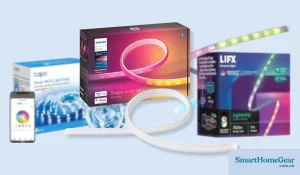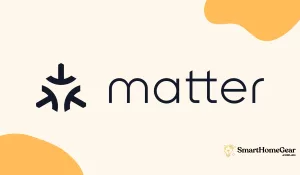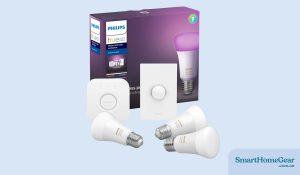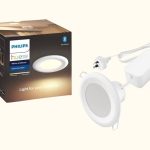Are you trying to decide between installing a smart light switch or just using smart bulbs? In my smart home I’ve used smart bulbs, but I think there is a pretty good case for using smart switches. In Australia, there is now a growing range of quality smart light switches. Here is my guide:
What is a Smart Light Switch
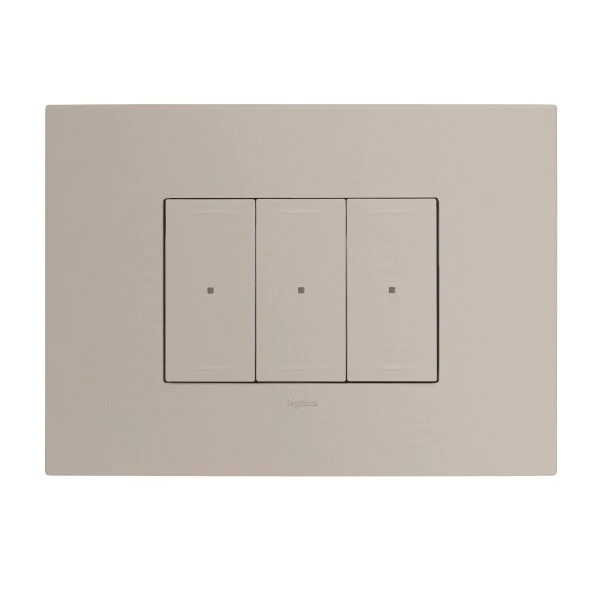
Instead of replacing your existing light bulbs with smart bulbs, a smart light switch will connect your existing lights to your smart home. It works just like a regular light switch, but you’ll be able to turn it on and off using a voice assistant or your smartphone.
Pros of installing a Smart Light Switch
Here are some of the pros of using smart light switches instead of using smart bulbs:
Use Your Existing Switches
With Smart Bulbs, you can’t turn them off at the switch. Once they lose power, smart bulbs lose their connection. They need to be controlled via an app or connected smart switch. This means making sure people don’t use the existing switches.
Keep Your Existing Bulbs
If your home has a lot of downlights, you might not be too keen on replacing each bulb with an expensive smart bulb. With a smart switch, you can use these existing lights.
May Help with Connection Issues
While my Philips Hue bulbs are super reliable and on my setup never have connection issues, I know that many people have issues with smart bulbs dropping connections. A smart light switch should still work even if your Wifi goes down. You’ll still be able to physically turn your lights on at the switch. (Pro tip – you can also turn smart lights on physically, by turning the power on and off. This will turn them back on).
Cons of Installing a Smart Light Switch
Professional Install Needed
You can install a Philips Hue Switch that controls Philips Hue lights on your own. It just sticks to the wall. In contrast, a Smart Light Switch will require a licensed electrician. So obviously this is going to be a more expensive install.
Not all Wiring Supported
I’ve found that most smart light switches in Australia require a neutral wire. While most modern builds have this, older homes might not. A lot of smart switches also don’t support two-way switching.
Limited Dimming Options
I’ve found that most smart switches in Australia don’t support dimming. One of the great advantages of Smart Bulbs is you can set the exact light level. Many smart bulbs let you also choose a colour. Smart switches don’t allow this.
Harder to Replace
Over the coming years, there will be some exciting new technologies for Smart Homes. These include Thread and Matter, which will make your smart home devices work across all platforms. If you have a hard-wired switch, there is no guarantee it will get updates and it will be harder to replace with a new product.
Some smart switches won’t work on certain platforms. For example you might currently have an Android device and your smart switch will work fine. But in the future you might replace that device with an iPhone and the smart switch might not work with Homekit. To mitigate this I would install a homekit light switch from the get go as this will almost certaintly support all platforms.
No Support for Adaptive Lighting
One neat Apple Home feature is adaptive lighting. This feature changes the colour and brightness of your smart lights throughout the day. Other Smart Homes platforms have similar features too. Without smart bulbs you won’t be able to use this type of feature.
Using Smart Light Switches and Smart Bulbs Together
I think the ultimate setup is using both Smart Bulbs and Smart Light Switches together. This means you’ll be able to turn your smart lights on and off using a physical switch, but you’ll also be able to change the colour, temperature and brightness of your lighting using an app.
Alternatively, you might want to use some smart light switches and some smart bulbs. I like using Smart Bulbs in lamps and LED strips. These create really great ambient light setups good for chilling. But there are times when I want brighter downlights. These can be controlled using a smart light switch.

